Introduction to Intervals
An interval is simply the distance between two notes. Intervals are the building blocks to everything a musician creates in music because all music can be broken down to a base
level of note intervals. This chapter will look at the five types of intervals and how they can be altered, all intervals within one octave, how to build intervals beyond one
octave, inverted intervals, and how to apply intervals.
Interval Types
The five interval types are major, minor, perfect, augmented, and diminished. Interval distances for these five types are made up of half and whole steps. A half step
distance is one note to the very next, such as A to A# or B to C. A whole step distance is two notes apart, A to B or B to C#. Whole step and half step interval distances
are used to navigate from one interval type to another.
Here are the all the ways to manipulate these five interval types.
A major interval that is lowered a half step
becomes a minor interval. For example, the C major seventh interval (C to B) lowered a half step becomes a minor seventh interval (C to Bb). A perfect interval lowered
a half step becomes a diminished interval. An example of a perfect fifth is C to G, and if the G note is lowered a half step, a diminished fifth interval (C to Gb) is
created. When a perfect interval is raised a half step, it becomes an augmented interval. Returning to the C to G interval again, this perfect fifth interval raised a
half step to G# becomes an augmented fifth interval (C to G#). Tritones are diminished fifth (augmented fourth) intervals that cut an octave right in half and are the
longest interval distance from the root note. So, an example of a tritone interval is C to Gb and Gb to C, because they are both a diminished fifth interval from each
other or three whole steps apart.
Intervals In One Octave
Here are Intervals from C within one octave.
|
Note Distance
|
Interval Name
|
Interval Example
|
|
1/2 step (h)
|
Minor Second (m2)
|
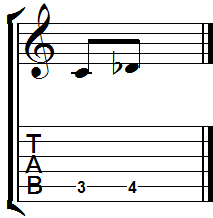
|
|
1 step (w)
|
Major Second (M2)
|
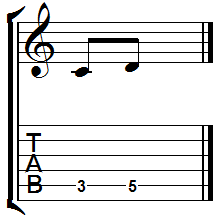
|
|
1+1/2 steps (w+h)
|
Minor Third (m3)
(Augmented Second)
|
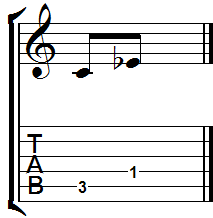
|
|
2 steps
|
Major Third (M3)
|
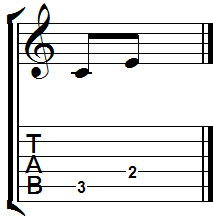
|
|
2+1/2 steps
|
Perfect Fourth (P4)
|
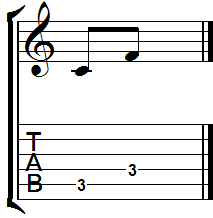
|
|
3 steps
|
Diminished Fifth (b5)
(Augmented Fourth)
|
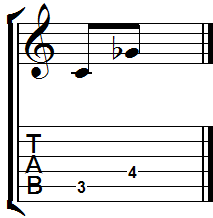
|
|
3+1/2 steps
|
Perfect Fifth (P5)
|

|
|
4 steps
|
Minor Sixth (m6)
(Augmented Fifth)
|
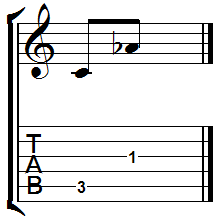
|
|
4+1/2 steps
|
Major Sixth (M6)
(Diminished Seventh)
|
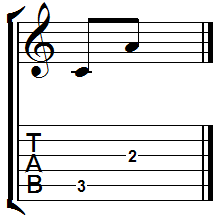
|
|
5 steps
|
Minor Seventh (m7)
(Augmented Sixth)
|
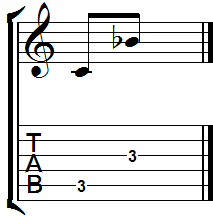
|
|
5+1/2 steps
|
Major Seventh (M7)
|
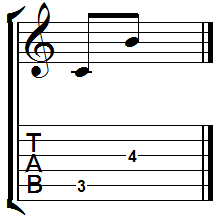
|
|
6 steps
|
Octave
|
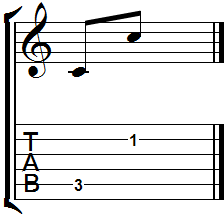
|